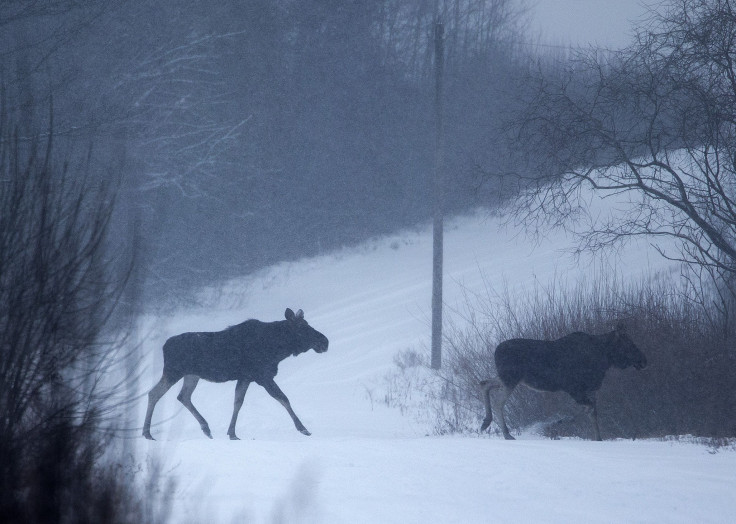Global Warming Killing Elk? Herd Of 41 Die In Oregon After Falling Through Ice At Brownlee Reservoir

2016 has turned out to be a pretty tough year for members of the deer family. Reindeer were perhaps the worst hit cervids, largely due to various impacts of climate change and global warming, with reports of about 80,000 deaths in Russia, the loss of 40 percent of the world’s largest herd and the animals getting smaller due to a rise in Arctic temperatures.
And in news reported by the Baker City Herald, a herd of 41 elk died in Oregon on Tuesday morning when it was trying to cross the Brownlee Reservoir, about 260 miles east of Portland. The animals were walking over the frozen Powder River arm of the reservoir when the ice broke in four places.
Brian Ratliff, district wildlife biologist at the Oregon Department of Fish and Wildlife’s (ODFW) Baker City office, told the newspaper the incident was reported by a citizen who lives near the reservoir. The elk were trying to cross the reservoir from the north side, and were at least 300 yards from the shore when the ice broke. ODFW officials went to the area to see if they could save any of the animals or even salvage meat, but both options were impossible, Ratliff said.
In a Facebook post, ODFW called the incident “a sad situation.”
The post also said: “After several years of drought, eastern Oregon is experiencing a real winter this year. The extra moisture and snowpack will be good for wildlife and habitat in the long run but conditions may be tough on critters this winter.”
It is not possible to link the incident directly with global warming, but given that “a real winter” is in place in Oregon after many years, it would not be amiss to expect thicker ice to form on the reservoir. In a 2003 scientific study, titled “Ice Formation on Brownlee Reservoir and Potential Effects on Big Game Populations,” its authors found the Powder River arm, where Tuesday’s incident took place, to be the area or the reservoir which was very likely to have ice formation, usually starting in early December and thawing only after late February.
“This period of expected ice formation was during the periods when deer were observed to cross the reservoir,” the study said. Based on various previous studies, it added that ice thickness of over 4 inches is probably safe for large wildlife, such as elk, to walk over.
© Copyright IBTimes 2025. All rights reserved.





















